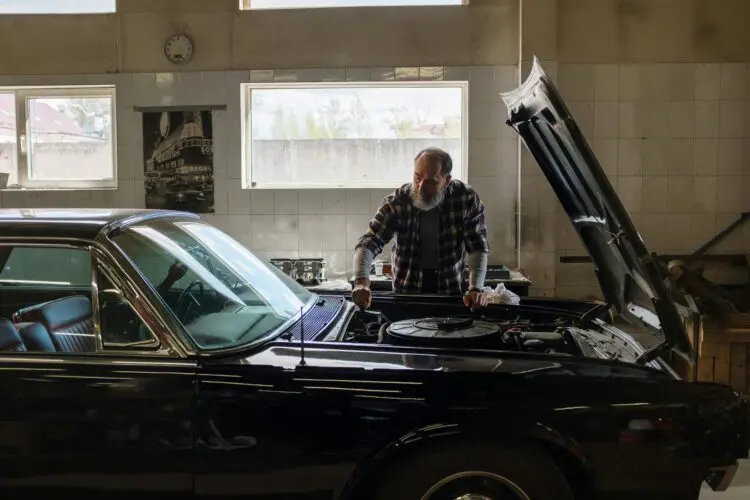Powerful Tips to Successfully Protect and Grow Your Classic-Car Investment

Nothing matches the pride of hearing a meticulously tuned straight-six come to life in a classic car. The feeling of running your hand over the mirror-smooth fender you spent months perfecting is unparalleled. Yet every seasoned restorer knows that the vehicle itself is only half the story. The specialty tools that keep it road-ready are just as critical to long-term value. Proper tool care is a cornerstone of good maintenance. This not only preserves value but also improves fuel efficiency and produces less vehicle emissions.
Lose a calibrated torque wrench to rust, or crack a rare trim-clip remover, and you pay twice: once to replace the tool and again in diminished resale value or flawed workmanship. The good news? A thoughtfully chosen protective case system can stop those losses before they start. Below you’ll find the why, what, and how of pairing the right tool cases with the proper maintenance routines. This ensures your classic stays worthy of concours ribbons and future generations.
Why Specialized Tool Cases Matter
The hidden costs of disorganized or unprotected tools add up quickly. Industry data shows that classic-car owners can spend hundreds of dollars each year replacing damaged or misplaced specialty tools. That is money that could otherwise fund fresh upholstery, upgraded shocks, or an extra weekend rally.
Furthermore, value preservation is directly impacted by tool care. Appraisers routinely note “complete, well-maintained toolkits” as a key indicator that a car has been cared for properly. This factor can boost valuation by up to 5%.
Most importantly, environmental enemies never sleep. Humidity, fluctuating temperatures, and accidental drops all shorten tool life unless effective barriers are in place. A gasketed, impact-resistant enclosure provides that essential barrier against the elements.
| Key Insight: Proper tool care is a direct investment. Appraisers view well-kept toolkits as a key sign of meticulous ownership, a factor that can boost a classic’s valuation. |
Choosing the Right Tool Case for Classic Cars
Selecting the appropriate case begins with understanding the materials. ABS plastic is lightweight and budget-friendly. However, it can warp under the extreme heat of a summer garage. Aluminum offers an excellent strength-to-weight ratio and a vintage-appropriate aesthetic. Though, it may dent if tossed carelessly into a trunk.[a]For ultimate protection, hard-shell polymers provide military-grade impact resistance, integrated gasket seals, and broad temperature tolerance.
Interior protection is just as crucial. Customizable foam inserts are your best friend. They cradle delicate dial calipers, pry tools, and timing lights, preventing metal-on-metal scuffs. For added defense against moisture, add silica-gel packets to the case. Be sure to label each cavity for rapid inventory.
Finally, consider security and portability. Look for features like lockable latches and padded handles for transport to car shows. For comprehensive solutions, options like custom hard cases from Royal Case Company demonstrate how features such as laser-cut foam and desiccant slots can be integrated. This allows for advanced organization, especially as a collection grows.
| Pro Tip: Match your torque-wrench length to the case depth. Storing a long wrench in a short case can bend the handle, destroying its critical calibration and risking vehicle damage. |
Regular Maintenance Checks – Integrating Tool Cases

Image by Cottonbro Studios from Pexels.
Alt text: Mechanic installs wheel on lifted car.
Fluid Management
Oil-filter wrenches and compression-test gauges inevitably get coated in fluids. A leak-proof, oil-resistant case with a removable rubber insert keeps odors and slippery residue contained. This protects your chrome polish and upholstery kits from contamination.
Tire and Wheel Care
Arrange torque sticks, lug-nut sockets, and thin-wall impact sleeves upright in foam-lined compartments. This makes the correct size visible at a glance. For faster access, you can color-code the foam cavities with a paint marker to match your socket colors. This makes for race-day-fast changes.
Brake System Assessment
Moisture is brake fluid’s sworn enemy, and it’s also a major threat to tool steel. Store your bleeder-kit fittings and flare-nut wrenches in a gasketed case with desiccant packs to keep them dry and corrosion-free. Remember to set a calendar reminder to replace the packs every six months.
Proper Storage Techniques
Long-Term Vehicle Storage
When your prized ‘67 Mustang hibernates under a breathable cotton cover, give its tools equal respect. Place the sealed cases on a sturdy shelving unit rather than directly on the concrete floor. This is where temperature swings and condensation congregate and can cause damage.
Environmental Control
For ideal preservation, aim to keep your storage area between 40–60% relative humidity and 60–75°F.[b]If you only heat the garage when you are actively wrenching in the winter, a good pair of insulated gloves will keep your dexterity high. This helps avoid jeopardizing an original Bakelite radio knob.
| Important: Never store tool cases directly on a concrete floor. Concrete wicks moisture and creates temperature swings, promoting rust that can ruin your tools, even inside a case. |
Original Parts Sourcing & Documentation
Authentic Components
New-old-stock (NOS) distributor caps, carburetor jets, or fragile glass fuses deserve their own labeled micro-case inside a larger toolbox. One owner of a 1967 Mustang avoided $800 in replacement costs because each delicate NOS part was nested securely inside foam cutouts and survived an interstate move unscathed.
Alternative Sources & Networking
Swap meets and online forums are treasure troves for rare parts, but only if you can measure accurately before buying. Keeping your inspection mirrors and digital calipers in protective slots ensures they arrive at the meet intact and ready for use. This is true even after a bumpy ride.
Exterior Detailing and Preservation

Image by Tima Miroshnichenko from Pexels.
Alt text: Lady detailing car windshield with microfiber.
Paint Care & Protection
Dedicate a scratch-proof divider case specifically for microfiber towels, clay bars, and dual-action polisher pads. Separating your “paint” towels from your “engine bay” towels is a critical step. This prevents cross-contamination and avoids creating swirl marks on your finish.
Chrome and Trim Maintenance
Chrome-polishing kits and their applicators will last longest when stowed with an anti-corrosive liner. VCI (volatile corrosion inhibitor) paper works wonders for this. Be sure to replace it yearly for maximum protective effect.
Interior Maintenance
Upholstery Preservation
While period-correct tool rolls look great, they don’t stop humidity from reaching your tools. A slim hard case with a desiccant cartridge is far more effective. It prevents mildew growth on tools and avoids punctures in your delicate vinyl seats.
Dashboard and Instrument Care
Using plastic pry tools greatly reduces the risk of cracking brittle trim rings or dashboard components. House them in anti-static compartments so they don’t attract dust that can scratch delicate speedometer lenses or wood grain veneers.
Expert Insights & Further Resources
For those interested in the technical specifications, further reading on IP-rated gasket seals and how proper tool storage affects classic car valuation can provide deeper insights into long-term preservation strategies.
| Quote: “Treat your tools like you treat your paint: one scratch today is rust tomorrow.”—Maria Alvarez, SEMA-award-winning restorer |
Preserving Your Investment for Future Generations
A holistic preservation plan isn’t complicated: keep moisture out, keep the temperature stable, and keep every socket exactly where you left it. By adopting this mindset, your heir will inherit not just a pristine classic car. They will also get a complete, ready-to-use toolkit that tells its own story of meticulous care.
[a]Fact checked: https://pmc.ncbi.nlm.nih.gov/articles/PMC11619995/
[b]Fact checked: https://pmc.ncbi.nlm.nih.gov/articles/PMC10924614/
Read more on
MyCarHeaven are on Instagram. Go check us out and do follow us.
Go visit the MyCarHeaven Instagram page. We post regular quality content, predominantly focused on classic cars, supercars, hypercars and car shows. We also feature all our competitions here, where you will have the chance IF YOU FOLLOW US and you follow the competition entry criteria, you could be in with a chance of winning tickets to the best UK car shows, and other automotive stuff.
Go to the MyCarHeaven Instagram account here. Advertisement
Advertisement Advertisement
Advertisement Advertisement
Advertisement Advertisement
Advertisement




